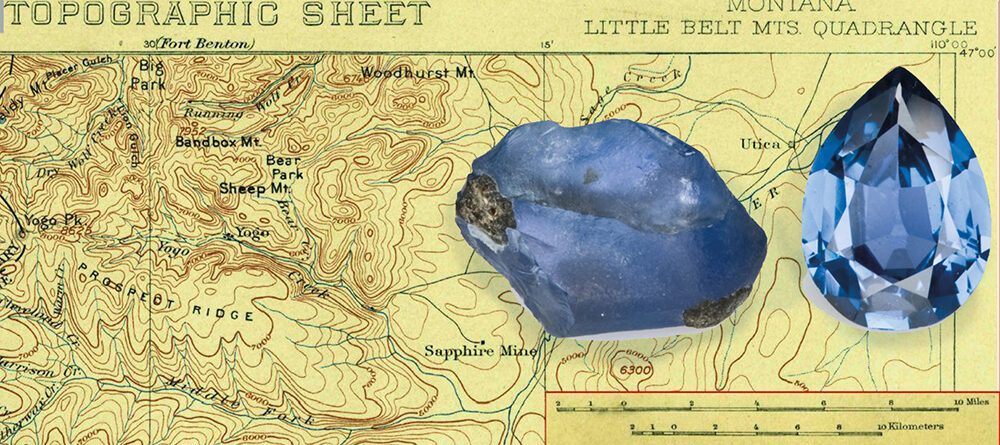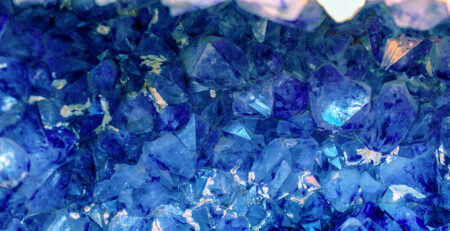Yogo Sapphires : The ‘Blue Pebbles’ of Montana
Yogo sapphires or Montana sapphires are blue sapphires, a colored variety of corundum, found in Montana, primarily in Yogo Gulch (part of the Little Belt Mountains) in Judith Basin County, Montana. Yogo sapphires are typically cornflower blue, a result of trace amounts of iron and titanium. They have high uniform clarity and maintain their brilliance under artificial light. Because Yogo sapphires occur within a vertically dipping resistive
Yogo sapphires were not initially recognized or valued. Gold was discovered at Yogo Creek in 1866, and though “blue pebbles” were noticed alongside gold in the stream alluvium by 1878, it was not until 1894 that the “blue pebbles” were recognized as sapphires. Sapphire mining began in 1895 after a local rancher named Jake Hoover sent a cigar box of gems he had collected to an assay office, which in turn sent them to Tiffany’s in New York, where an appraiser pronounced them “the finest precious gemstones ever found in the United States”. Hoover then purchased the original mother lode from a sheepherder, later selling it to other investors. This became the highly profitable “English Mine”, which flourished from 1899 until the 1920s. A second operation, the “American Mine”, was owned by a series of investors in the western section of the Yogo dike, but was less profitable and bought out by the syndicate that owned the English Mine. In 1984, a third set of claims, known as the Vortex mine, opened.
The term “Yogo sapphire” is the preferred wording for gems found in the Yogo Gulch, whereas “Montana sapphire” generally refers to gems found in other Montana locations. More gem-quality sapphires are produced in Montana than anywhere else in North America. Sapphires were first discovered in Montana in 1865, in alluvium along the Missouri River. Finds in other locations in the western half of the state occurred in 1889, 1892, and 1894. The Rock Creek location, near Phillipsburg, is the most productive site in Montana, and its gems inspired the name of the nearby Sapphire Mountains. In 1969, the sapphire was co-designated along with the agate as Montana’s state gemstones.
In the early 1980s, Intergem Limited, which controlled most of the Yogo sapphire mining at the time, rocked the gem world by marketing Yogo sapphires as the world’s only guaranteed “untreated” sapphire, exposing a practice of the time wherein 95 percent of all the world’s sapphires were heat-treated to enhance their natural color. Although Intergem went out of business, the gems it mined appeared on the market through the 1990s because the company had paid its salesmen in sapphires during its financial demise. Citibank had obtained a large stock of Yogo sapphires as a result of Intergem’s collapse, and after keeping them in a vault for nearly a decade, sold its collection in 1994 to a Montana jeweler. Mining activity today is largely confined to hobby miners in the area; the major mines are currently inactive.
Related posts
- The Timeless Jacqueline Kennedy Onassis Jewelry Collection
- Reimagine these 10 famous jewellery pieces with our natural blue sapphires
- The Natural Wonder of Star Sapphires
- Elizabeth Taylor’s Impressive Jewelry Collection
- Corundum’s Chameleons— Color-change Sapphires
- The Word’s Five Most Famous Blue Sapphires
- Most famous Ceylon blue Sapphire ring
- The Natural Rough Yellow Sapphire
- Melania Trump: The First Lady’s Jewelry Collection
- Kate Middleton’s Stunning Jewellery Collection
- Sapphire Mining









